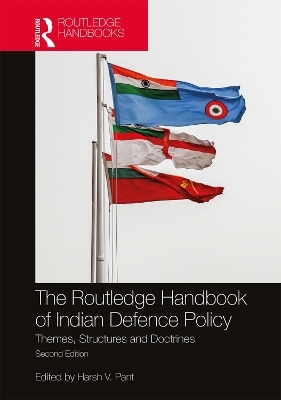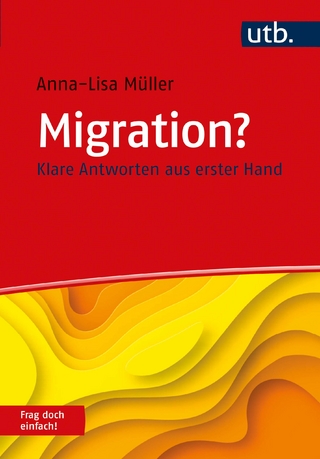
The Routledge Handbook of Indian Defence Policy
Routledge India (Verlag)
978-0-367-50259-1 (ISBN)
This edition of the handbook:
Canvasses over 60 years of Indian defence policy, its relation to India’s rising global economic profile, as well as foreign policy shifts;
Discusses several key debates that have shaped defence strategies through the years: military doctrine and policy, internal and external security challenges, terrorism and insurgencies;
Explores the origins of the modern armed forces in India; evolution of the army, navy and air forces; investments in professional military education, intelligence and net-centric warfare, reforms in paramilitary forces and the Indian police;
Comments on India’s contemporary strategic interests, focusing on the rise of China, nuclearisation of India and Pakistan’s security establishments, and developments in space security and missile defence.
Taking stock of India’s defence planning architecture over the past decade, this accessibly written handbook will be an indispensable resource for scholars and researchers of security and defence studies, international relations and political science, as well as for government thinktanks and policymakers.
Harsh V. Pant is Professor of International Relations in the Defence Studies Department and the India Institute at King’s College London, UK. He is Director of Research and Head of Strategic Studies Programme at Observer Research Foundation in New Delhi, India. He is also an adjunct fellow with the Wadhwani Chair in US–India Policy Studies at the Center for Strategic and International Studies, Washington, DC. His current research is focused on Asian security issues. His most recent books include China Ascendant: Its Rise and Implications (2019), India’s Evolving National Security Agenda: Modi and Beyond (2019), Indian Foreign Policy: The Modi Era (2019), New Directions in India’s Foreign Policy: Theory and Praxis (2018) and India’s Nuclear Policy (2018). Pant writes regularly for various media outlets, including The Japan Times, The Wall Street Journal, The National (UAE) and The Telegraph.
1.Introduction Section 1: Soldier, State and Society in India 2. The Indian Army: 1700s-1947 3. Indian Civil-Military Relations: An Overview 4. Indian Society and the Soldier: Will the Twain Ever Meet? Section 2: Military and Foreign Policy 5. India and the Changing Nature of War: Gradual Incrementalism? 6. Military as an instrument of India’s foreign policy: An Expanding Footprint 7. India’s Erratic Defence Diplomacy: In Need of a Booster Dose 8. India’s Counter Terror Diplomacy: Strategy and Outcome Secion 3: The Services 9. The Indian Army: Evolution in the Age of Nuclear Weapons and Terrorism 10. Evolution of the Indian Navy: Towards a ‘Maritime Awakening’? 11. Indian Air Force: Persuasive in Peace, Effective in War 12. Evolution of Jointness in Indian Defence Forces: Stuck Between the Services Section 4: Doctrines 13. Indian Army’s flagship doctrines: Need for Strategic Guidance 14. The Indian Navy’s Doctrinal Evolution: Between Deterrence and Denial 15. Doctrinal Evolution in the Indian Air Force: Towards a Strategic Future 16. Section 5: Defence Versus Development 17. Changing Contours of Indian Defence Expenditure: Past as Prologue? 18. Defence Procurement in India: Challenges Abound Section 6: Internal Security 19. Islamist Terrorism in India: A Hybrid Threat 20. Bullet Holes in Village Walls: India's Naxalite Challenge 21. Insurgencies in India's Northeast: Rise, Fall and the Rise? 22. Section 7: Institutional Infrastructure 23. The Evolution in India’s National Security Apparatus: Persisting Structural Deficiencies 24. The Indian Intelligence System: Meeting the Challenges of a New World 25. The Indian Police: Need for Reinvention 26. Para Military Forces and Central Armed Police Forces of India: Punching Below Their Capabilities 27. Professional Military Education in India: Towards a New Architecture Section 8: Nuclear Weapons and Space 28. Nuclear Weapons in India’s Defence Policy: Achieving Conventional-Nuclear Synergy 29. Space Security and Missile Defence: Towards Greater Pragmatism 30.India’s Cyber Defence Capabilities: Their Role in Net-Centric Warfare
| Erscheinungsdatum | 02.02.2022 |
|---|---|
| Zusatzinfo | 14 Tables, black and white; 5 Illustrations, black and white |
| Verlagsort | London |
| Sprache | englisch |
| Maße | 174 x 246 mm |
| Gewicht | 453 g |
| Themenwelt | Sozialwissenschaften ► Politik / Verwaltung ► Staat / Verwaltung |
| ISBN-10 | 0-367-50259-3 / 0367502593 |
| ISBN-13 | 978-0-367-50259-1 / 9780367502591 |
| Zustand | Neuware |
| Informationen gemäß Produktsicherheitsverordnung (GPSR) | |
| Haben Sie eine Frage zum Produkt? |
aus dem Bereich


